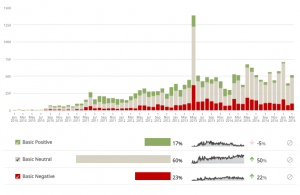Social Media Insights on Crime and Violence in Latin America & the Caribbean

Editor’s Note: This is a guest blog post by Victor Hugo Salcedo, Senior Program Assistant on NDI's Latin America and the Caribbean team.
The words “crime” and “violence” go seemingly together when talking about the Northern Triangle countries of Central America (El Salvador, Honduras, and Guatemala). The words “data” and “hackathon” go together when discussing technical innovation, intricate computer applications, and groups of hackers writing computer code to create the next billion-dollar application. Rarely these four words merge together on the same plane, but when they do, opportunities abound for conversations that have lots to do with innovation and more to do with citizen security and social development. I had the opportunity to take part in such conversations last week during the USAID-organized hackathon focusing on security levels in Central America and the Caribbean.
The event brought together data scientists, programmers, designers, and Latin America experts to find innovative ways to look at crime and homicide rates in the region, and try to find a solution to some of the causes of these maladies. But, what is a hackathon you ask? A hackathon is an event that brings together a group of people to find solutions to an specific problem. My group did just that with our main task: to analyze the extent to which social media analytics can be used as a public opinion tool by academics, civil society, and local governments to assess perception of violence in Honduras.
Using a platform called Crimson Hexagon, we searched Twitter data for words such as “pandilleros” (gang members) and “pandilla” (gang) to generate insights about drivers of positive or negative sentiment, and identify trends in how those keywords drove digital conversations. To this latter point, our analysis found for instance that in May 2013, there was a spike in conversations referencing pandilleros and pandilla, which we linked to a gang truce announced by the prominent gangs in Honduras, Mara Salvatrucha and Barrio 18. Another interesting insight was that Tweets seldomly associated the word “droga” (drug) with pandilla, two words that have been intricately used in the war on drugs rhetoric.
Although our findings are not scientific, we achieved our goal of generating new insights into the decade-old security problem affecting Honduras and its Central American counterparts. In a way, that was the main goal of the hackathon - to open our minds to see beyond current perception of violence and insecurity and find ingenious ways to solve them. Central America needs accountable governments, security and public sector funding, and social investment towards its civil society - that is not up for debate. But the region also needs a fresh point of view where innovation, social media tools, and technological terms combine with public security to achieve a greater goal.
